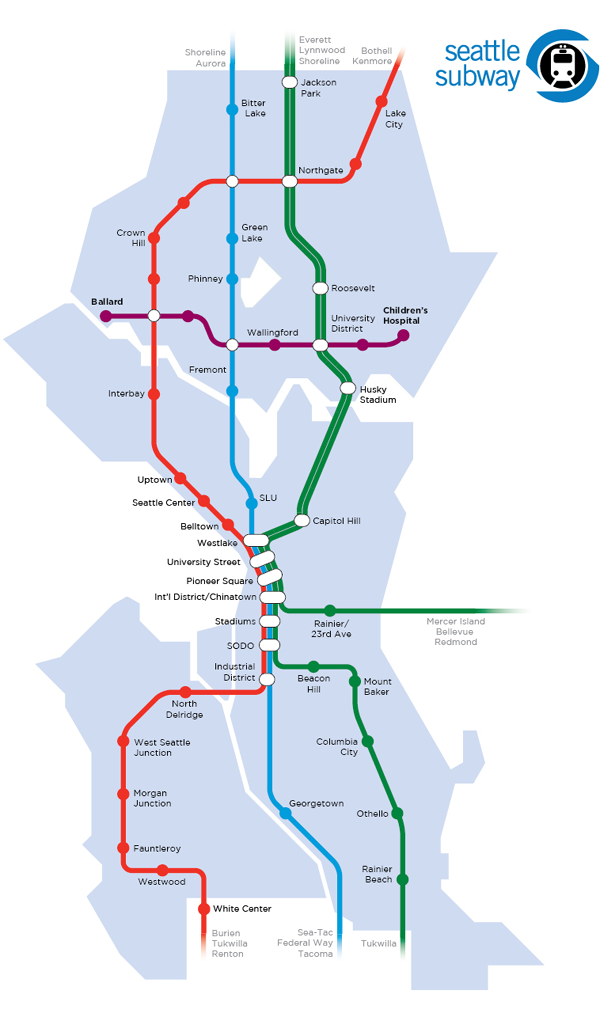A Subway For Our Climate
I recently rewatched David Roberts’ TEDx talk from early this year that lays out the basics of climate change and the stakes of failure. Simply put, we don’t have long to make large changes to our impact on Earth’s climate, and if we don’t make those changes, we will make as much as half the planet completely uninhabitable for humans. As Roberts says, this is serious: “if you go outside you will die.â€
There is no greater threat looming over human civilization.
We have little power to directly cause national action on climate change, except on particular issues at particular times, such as the fight going on right now over the oil pipeline in Canada.
So what do we do? We can’t afford to wait for national change. We need to fight for things that both reduce our emissions locally and put pressure on the national government to help. We need to show positive local impact so that we can demand funding for more.
Fortunately, we have a unique opportunity in Seattle. In most cities, transportation and buildings generate the bulk of greenhouse gas emissions. But because we have largely carbon neutral electricity, transportation is by far our single largest source of emissions.
Most of the trips we take day to day are to and from work, school, the store, meeting friends—things we could do on great transit. Most of us aren’t carrying anything we need a car or truck for. We’re burning fossil fuels and impacting the climate every time we go nearly anywhere—even most of our buses burn diesel.
But how can we move people without burning fossil fuels? There’s a simple way to take a huge bite out of our transportation emissions: electric rail. We’ve already started building a system—but slowly. Far too slowly given the severity of the threat. We need more, and we need a wide variety. Our core lines need to be good enough that people choose them freely over driving. They need to be as good as the best parts of Link—fast and out of traffic.
We need subways. Sound Transit is already building one, but we need it in every neighborhood.
When we ask voters for systems like this, they say yes—to a little at a time, as we’ve been building. But we have work to do to show that more and faster, is worth it.
Seattle Subway is an grassroots effort to do just that, motivated by the belief that our city will come together to say we need higher quality, higher capacity, faster transit, and we need it as soon as we possibly can if we hope to be successful in keeping our planet habitable. It’s the easiest, highest impact choice for our city.
It’s also replicable. When we win measures here, other cities use us as an example, one that can’t be brushed away. We aren’t foreign or different—we’re just like many other American cities, and so our example hits home.
If you want to have a chance to keep our planet livable, help us ask for faster, better, higher capacity transit—subway transit. Join Seattle Subway. We’re Seattle’s underground movement.

>>>

